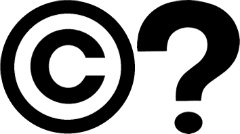Using Sources Carefully: Fair Use, Plagiarism and Copyright Infringement
Biff Barnes
If you do research for a book – and almost all of us do whether it’s for fiction or non-fiction – what can you legally take from your sources and what might get you into trouble?
The obvious answer is what they told you in elementary school, “Don’t copy.” Still some high profile writers have been embroiled in some ugly and expensive public flaps over this simple idea. Alex Haley, author of the blockbuster Roots settled a copyright infringement suit with fellow novelist Harold Courtlander for $650,000. Historian Doris Kearns Goodwin settled with writers of three books following accusations of plagiarism in her book The Fitzgeralds and the Kennedys by the Weekly Standard.
But assuming you are trying to play by the rules, what are those rules?
The answer is based on the legal concept of Fair Use.
The 1961 Copyright Law explained the fair use principle in this way:
…quotation of excerpts in a review or criticism for purposes of illustration or comment; quotation of short passages in a scholarly or technical work, for illustration or clarification of the author’s observations; use in a parody of some of the content of the work parodied; summary of an address or article, with brief quotations, in a news report; reproduction by a library of a portion of a work to replace part of a damaged copy; reproduction by a teacher or student of a small part of a work to illustrate a lesson; reproduction of a work in legislative or judicial proceedings or reports; incidental and fortuitous reproduction, in a newsreel or broadcast, of a work located in the scene of an event being reported.
The U.S. Copyright Office explains that four elements are used to determine whether a use is fair:
- The purpose and character of the use, including whether such use is of commercial nature or is for nonprofit educational purposes
- The nature of the copyrighted work
- The amount and substantiality of the portion used in relation to the copyrighted work as a whole
- The effect of the use upon the potential market for, or value of, the copyrighted work
In this month’s Independent, the magazine of The Independent Book Publishers Association, Steve Gillin an intellectual property lawyer with Wood Herron & Evans offered some sound advice on how to avoid problems in this area. He wrote:
Recognizing…that much creative work is inspired by earlier work of others, you can prepare to deflect or defend against claims that your work borrows impermissibly from the earlier works of others by adopting some best practices…
His recommendations include:
- Consult a number of sources, not just one, and keep a record of the works you consult.
- Limit your notes to facts and abstract ideas
- Work from your notes, not from the source itself
- Keep a writing log of activities and time spent on manuscript development
- Keep your interim drafts
This is excellent advice, but if you are uncertain of how the fair use principle applies to the material you want to use, the Copyright Office advises, “The safest course is always to get permission from the copyright owner before using copyrighted material.”
NOTE: Links to the Copyright Office site are not included in this post because they will only lead to announcement that the site is closed due to the partial government shutdown. I’ll add the links when the site is once again available.
